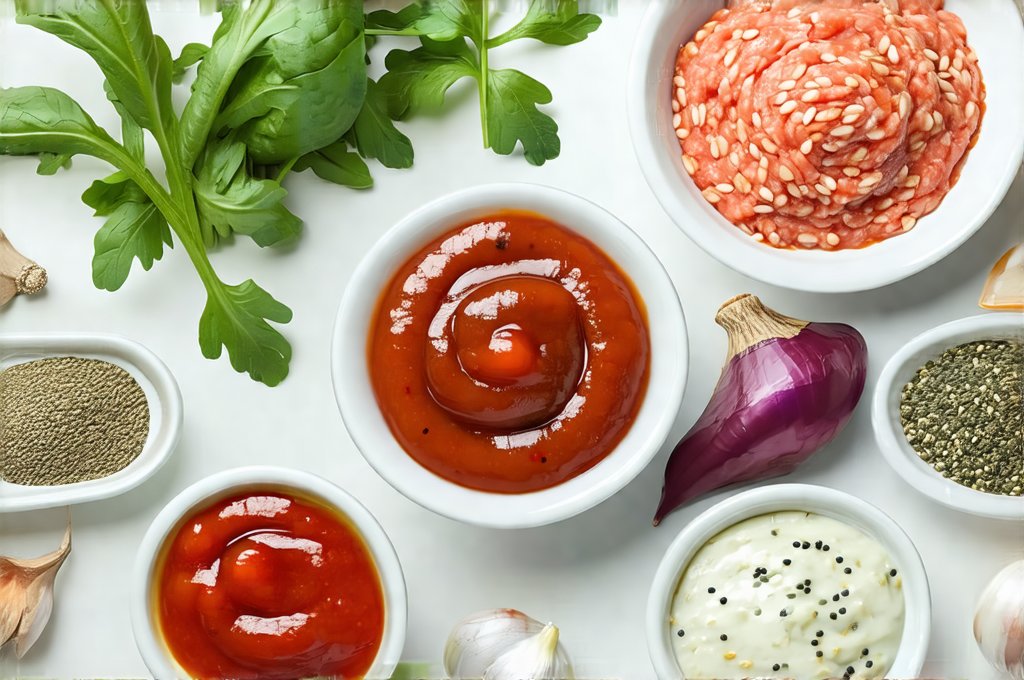Condiments are often an afterthought in our dietary considerations, yet they can wield significant influence over digestive comfort, particularly for individuals navigating conditions like gastroesophageal reflux disease (GERD), irritable bowel syndrome (IBS), and general bloating. These seemingly small additions to meals – ketchup, mustard, mayonnaise, salad dressings, hot sauces – frequently contain ingredients that can exacerbate symptoms in sensitive individuals. Understanding the potential triggers within common condiments is crucial for managing these conditions and enjoying food without discomfort. Many people unknowingly experience digestive distress after a meal simply because of hidden irritants found within their favorite sauces and spreads, making informed choices essential for well-being.
The challenge lies in the often complex ingredient lists found on condiment packaging. Ingredients like high levels of acidity, fats, certain spices, artificial sweeteners, and even seemingly benign additives can contribute to reflux, IBS flare-ups, or bloating. This article delves into the world of safe condiments for those managing these digestive concerns, offering guidance on navigating options, identifying potential triggers, and making informed choices that support a comfortable and enjoyable eating experience. It’s about empowering you with knowledge so you can confidently season your food without jeopardizing your gut health.
Understanding Digestive Sensitivities & Condiment Triggers
Reflux, IBS, and bloating each have distinct underlying mechanisms but often overlap in their dietary triggers. GERD is characterized by stomach acid flowing back into the esophagus, leading to heartburn and discomfort. High-fat condiments can relax the lower esophageal sphincter, allowing this reflux to occur more easily. For individuals with IBS, certain FODMAPs (fermentable oligosaccharides, disaccharides, monosaccharides, and polyols) found in some ingredients – like fructose in honey mustard or garlic in pesto – can trigger symptoms like gas, bloating, abdominal pain, and altered bowel habits. Bloating, often stemming from excessive gas production, can be exacerbated by ingredients that promote fermentation in the gut, such as certain sugars or fiber content present even in seemingly simple condiments.
The key to navigating condiment choices is personalization. What triggers one person may not affect another. Keeping a food diary to track symptoms and correlating them with specific condiments consumed can reveal individual sensitivities. It’s also important to remember that portion size matters; even generally safe condiments can cause issues if consumed in excessive quantities. Reading labels carefully and being mindful of ingredient lists is paramount – don’t just rely on marketing claims like “low-fat” or “natural,” as these don’t necessarily guarantee digestive friendliness. Considering probiotic strains alongside dietary changes can further support gut health.
Finally, consider the preparation method. Homemade condiments often allow for greater control over ingredients, minimizing potential triggers. For example, making your own salad dressing with olive oil, lemon juice, and herbs eliminates many of the additives found in store-bought versions.
Navigating Safe Condiment Options
Fortunately, a range of safe and delicious condiment options exist for those with digestive sensitivities. Olive oil and vinegar-based dressings are generally well-tolerated by most individuals, as long as excessive acidity isn’t an issue (lemon juice can sometimes be better tolerated than vinegar). Simple mustards made without added sugars or spices – Dijon mustard is often a good choice – can provide flavor without triggering reflux. Avocado mayonnaise, made with healthy fats and lacking the inflammatory oils found in conventional mayo, may be a suitable alternative for those sensitive to traditional mayonnaise.
However, even within these categories, careful label reading is essential. Look for products with minimal ingredients and avoid those containing high-fructose corn syrup, artificial sweeteners, or excessive amounts of garlic or onion powder. For individuals with IBS, pay close attention to FODMAP content; apps like Monash University’s FODMAP Diet app can be invaluable resources for identifying safe options. Consider alternatives such as tahini (sesame seed paste) as a base for dressings or dips, or using herbs and spices to add flavor without relying on potentially irritating ingredients. Remember that simplicity is key when choosing condiments. If you are planning for the holidays, review safe holiday eating tips to ensure a comfortable experience.
Spice Levels & Digestive Impact
Spicy foods are often cited as triggers for GERD, but the impact varies greatly between individuals. Capsaicin, the compound responsible for the heat in chili peppers, can relax the lower esophageal sphincter in some people, leading to reflux. However, it’s also been suggested that regular consumption of capsaicin may actually desensitize the esophagus over time. For those who find spicy foods problematic, starting with mild options and gradually increasing tolerance might be helpful, but always listen to your body.
For IBS sufferers, extremely spicy foods can sometimes exacerbate symptoms due to gut irritation. However, many spices – like ginger, turmeric, and cumin – are known for their anti-inflammatory properties and may even be beneficial in reducing IBS symptoms. Again, individual tolerance is crucial. When introducing new spices or condiments containing them, start with small amounts and monitor your reaction carefully. Herbal treatments like ginger can offer relief from digestive discomfort.
Homemade Alternatives & Control
One of the most effective ways to ensure condiment safety is to make your own. This allows complete control over ingredients and eliminates hidden triggers. Simple vinaigrettes are easy to prepare using olive oil, vinegar (or lemon juice), herbs, and a touch of maple syrup if desired. Pesto can be made without garlic or onion for those sensitive to FODMAPs. Mayonnaise alternatives can be created using avocado as a base.
Homemade condiments not only offer digestive benefits but also often taste fresher and more flavorful than store-bought options. Numerous recipes are available online, catering to various dietary needs and preferences. Investing time in homemade preparations is an investment in your digestive health and overall well-being. It’s also a fantastic way to avoid unwanted additives and preservatives. Combining probiotics and diet changes can further enhance gut health while adjusting your dietary habits.
Decoding Labeling & Hidden Triggers
Navigating condiment labels can be challenging due to the prevalence of hidden ingredients and vague terminology. Be wary of terms like “natural flavors,” which often mask a complex mixture of additives. Look for specific ingredient lists rather than relying on marketing claims. Pay close attention to sugar content, as excessive sugar intake can contribute to bloating and inflammation.
Common triggers to watch out for include: – High-fructose corn syrup – Artificial sweeteners (sorbitol, mannitol, xylitol) – these are FODMAPs – Garlic and onion powder – Excessive acidity (vinegar, citrus juices) – Sulfites (often found in preservatives) – can trigger IBS symptoms – Modified food starch – Inflammatory oils (soybean oil, canola oil, corn oil)
Learning to decipher ingredient lists empowers you to make informed choices that support your digestive health. Don’t hesitate to research unfamiliar ingredients and seek out products with simple, recognizable components. Consider safe cooking oils when preparing your meals for optimal digestion. And if you’re unsure about the safety of certain condiments, explore resources on safe condiments for sensitive guts.


















